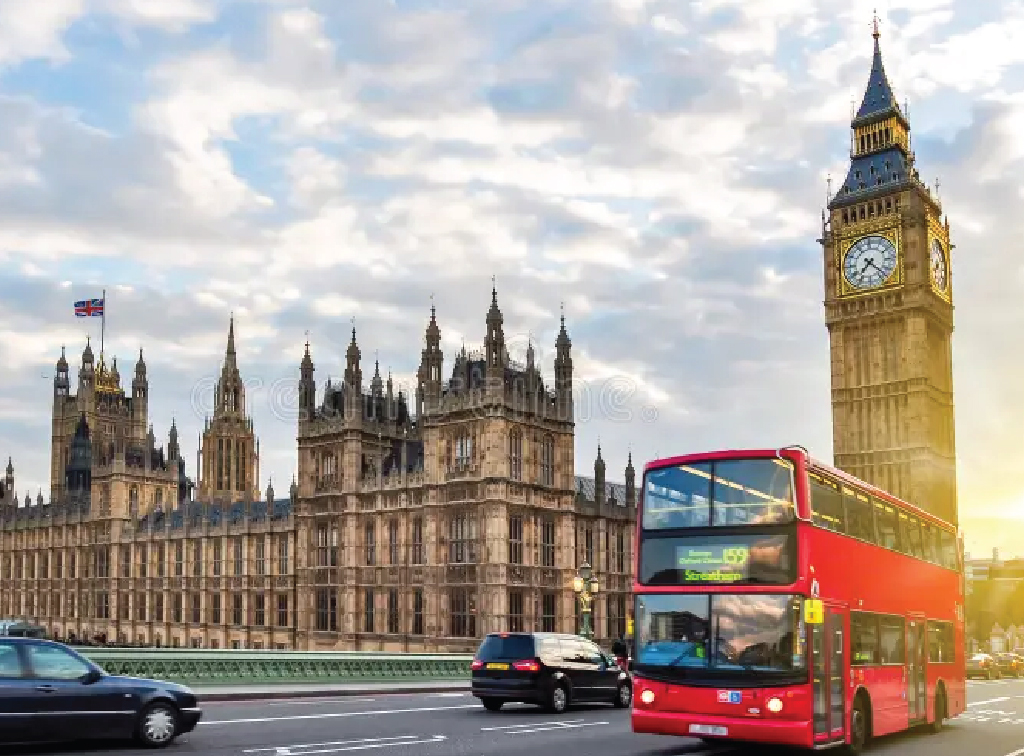| U.S. Student Visa Options for Minor Students |
For minor students, the most common types of U.S. student visas are:
- F-1 Visa (Academic Student Visa): The most widely used visa for international students attending academic programs such as high school, university, or language programs.
For minors, the F-1 visa is typically the most relevant, especially if the student plans to attend a U.S. high school or college.
| Requirements for Minor Students to Apply for an F-1 Visa |
To obtain an F-1 student visa as a minor, the student (and their family) must meet the following requirements:
Acceptance from a U.S. School (SEVP-approved)
- The minor student must first be accepted by a school that is SEVP-certified (Student and Exchange Visitor Program certified). This means the school is authorized to enroll international students.
- For K-12 education (elementary, middle, or high school), the school must be a SEVP-approved school.
- For post-secondary education (college, university), the school must also be SEVP-certified.
Financial Support
- The student must provide proof of sufficient financial resources to cover tuition fees, living expenses, and return travel. This could be demonstrated through:
- Bank statements
- Financial affidavits or sponsorship letters
- Family income documents
The required amount of financial support can vary depending on the school’s location and the student's accommodation arrangements.
Parental Consent and Custodianship (for Minor Students)
-
If the student is under the age of 18 (or 21, depending on the state), a custodian arrangement must be in place. The custodian will be a responsible adult in the U.S. (usually a U.S. citizen or permanent resident) who takes responsibility for the student's welfare while studying in the U.S.
-
The minor student must provide a signed custodianship agreement from both the parent(s) and the custodian.
Note: In some states, a parent or guardian may need to accompany the student, or the school may require additional documents for minor students.
Complete Form I-20 (Certificate of Eligibility for Nonimmigrant Student Status)
- The school will issue the Form I-20, which is required for the visa application.
- This form provides evidence that the student has been accepted to the school and meets all the necessary requirements for studying in the U.S.
| Steps to Apply for an F-1 Visa for a Minor Student |
Here is a step-by-step guide on how to apply for the F-1 student visa:
Step 1: Get Accepted by a SEVP-approved School
- Apply and receive an acceptance letter from an SEVP-approved school in the U.S.
Step 2: Pay the SEVIS Fee
- After receiving the Form I-20, the student must pay the SEVIS fee (Student and Exchange Visitor Information System fee), which is typically $350 for F-1 visa applicants.
- The SEVIS fee payment must be made online before scheduling the visa interview.
Step 3: Complete the DS-160 Form (Online Visa Application)
- Complete the DS-160 form, which is the online application for a U.S. visa. This form will require personal details, travel information, and security-related questions.
- After completing the DS-160, print the confirmation page with the barcode for your records.
Step 4: Schedule a Visa Interview
- The minor student must schedule a visa interview at the nearest U.S. Embassy or Consulate. It’s important to book the interview well in advance, as appointment availability can vary depending on the location.
Step 5: Prepare Required Documents
- The following documents are needed for the visa interview:
- Form I-20 (issued by the U.S. school).
- Valid passport (valid for at least 6 months beyond the intended stay in the U.S.).
- Visa appointment confirmation (DS-160).
- SEVIS fee payment receipt.
- Passport-sized photo that meets U.S. visa photo requirements.
- Proof of financial support (bank statements, affidavits).
- Custodianship letter (for minor students).
- Parental consent letter.
Step 6: Attend the Visa Interview
- The minor student will attend the visa interview with their parent(s) or guardian. In most cases, the parent(s) will need to accompany the child to the interview.
- During the interview, the consular officer will assess whether the student meets the eligibility requirements for the F-1 visa and if they intend to return to their home country after completing their studies.
Step 7: Wait for Visa Approval
- If the visa is approved, the student’s passport will be returned with the F-1 visa stamp. The processing time for a visa can vary, so it’s important to plan accordingly.
Step 8: Arrive in the U.S.
- The student can now travel to the U.S. up to 30 days before the start of the academic program as indicated on the Form I-20.
- The student should present the Form I-20, passport, and other supporting documents upon arrival in the U.S. for entry into the country.
|
Step 5: Prepare Required Documents
- The following documents are needed for the visa interview:
- Form I-20 (issued by the U.S. school).
- Valid passport (valid for at least 6 months beyond the intended stay in the U.S.).
- Visa appointment confirmation (DS-160).
- SEVIS fee payment receipt.
- Passport-sized photo that meets U.S. visa photo requirements.
- Proof of financial support (bank statements, affidavits).
- Custodianship letter (for minor students).
- Parental consent letter.
Step 6: Attend the Visa Interview
- The minor student will attend the visa interview with their parent(s) or guardian. In most cases, the parent(s) will need to accompany the child to the interview.
- During the interview, the consular officer will assess whether the student meets the eligibility requirements for the F-1 visa and if they intend to return to their home country after completing their studies.
Step 7: Wait for Visa Approval
- If the visa is approved, the student’s passport will be returned with the F-1 visa stamp. The processing time for a visa can vary, so it’s important to plan accordingly.
Step 8: Arrive in the U.S.
- The student can now travel to the U.S. up to 30 days before the start of the academic program as indicated on the Form I-20.
- The student should present the Form I-20, passport, and other supporting documents upon arrival in the U.S. for entry into the country.
| Custodianship and Parental Responsibilities for Minor Students |
- A custodian is responsible for taking care of the student during their stay in the U.S. If the student is under 18, they must have a custodian who is a U.S. citizen or permanent resident.
- The custodian will provide a safe living arrangement, ensure the student’s well-being, and help them comply with school regulations and laws.
- Homestay programs or staying with a guardian are common options for minor international students.
Public School Tuition Fees (Grades K-12)
Public schools in the U.S. generally offer free education for domestic students (U.S. citizens and permanent residents). However, for international students, there are tuition fees. These fees vary by school district, as public schools are locally funded and operated.
Elementary and Secondary (Grades K-12)
- Tuition Fees for International Students: Public schools charge international students anywhere from USD 7,000 to USD 20,000 per year. The fees depend on the state, the school district, and whether the district allows international students.
- Additional Costs: Apart from tuition, additional costs may include:
- Books and supplies: Usually around USD 500 - USD 1,000 per year.
- Extracurricular activities: Can range from USD 200 to USD 1,000 annually.
- Uniforms: Some schools may require uniforms, especially at the elementary level, with costs ranging from USD 100 to USD 500.
Public schools may have limited spots available for international students, and not all districts accept them. Some districts charge higher tuition fees depending on the international student program.
Private School Tuition Fees (Grades K-12)
Private schools in the U.S. generally offer smaller class sizes, specialized programs, and a different kind of curriculum (e.g., religious-based, Montessori, etc.). Private schools typically have much higher tuition fees than public schools.
Elementary and Secondary (Grades K-12)
-
Tuition Fees: Private school tuition can range from USD 10,000 to USD 50,000 per year.
- The lower range typically applies to lesser-known private schools, while prestigious or top-tier private schools may charge fees at the higher end.
- Boarding Schools: If the student is attending a boarding school, tuition fees can go as high as USD 50,000 to USD 70,000 per year, which includes room and board.
-
Additional Costs: Apart from the base tuition, students might face other expenses such as:
- Room and board: USD 5,000 to USD 15,000 annually, for those staying in a boarding school.
- Books, uniforms, and extracurricular activities: Costs can add up to USD 1,000 - USD 5,000 or more annually.
| Health Insurance for Minor Students |
-
International students, including minors, must have health insurance while studying in the U.S. Some schools provide health insurance plans for international students, while others require students to have private health insurance.
| Duration of Stay and Visa Extensions |
- The F-1 visa is typically valid for the duration of the student’s program. After completing studies, the student must return to their home country unless they apply for a visa extension or change of status.
- Minors in the U.S. on an F-1 visa are typically granted a duration of stay based on the academic program.
| Pathway to U.S. Permanent Residency |
- While holding an F-1 visa, a minor student is not eligible for permanent residency (Green Card) immediately. However, after completing higher education, they may explore employment-based or family-sponsored immigration options.
|






